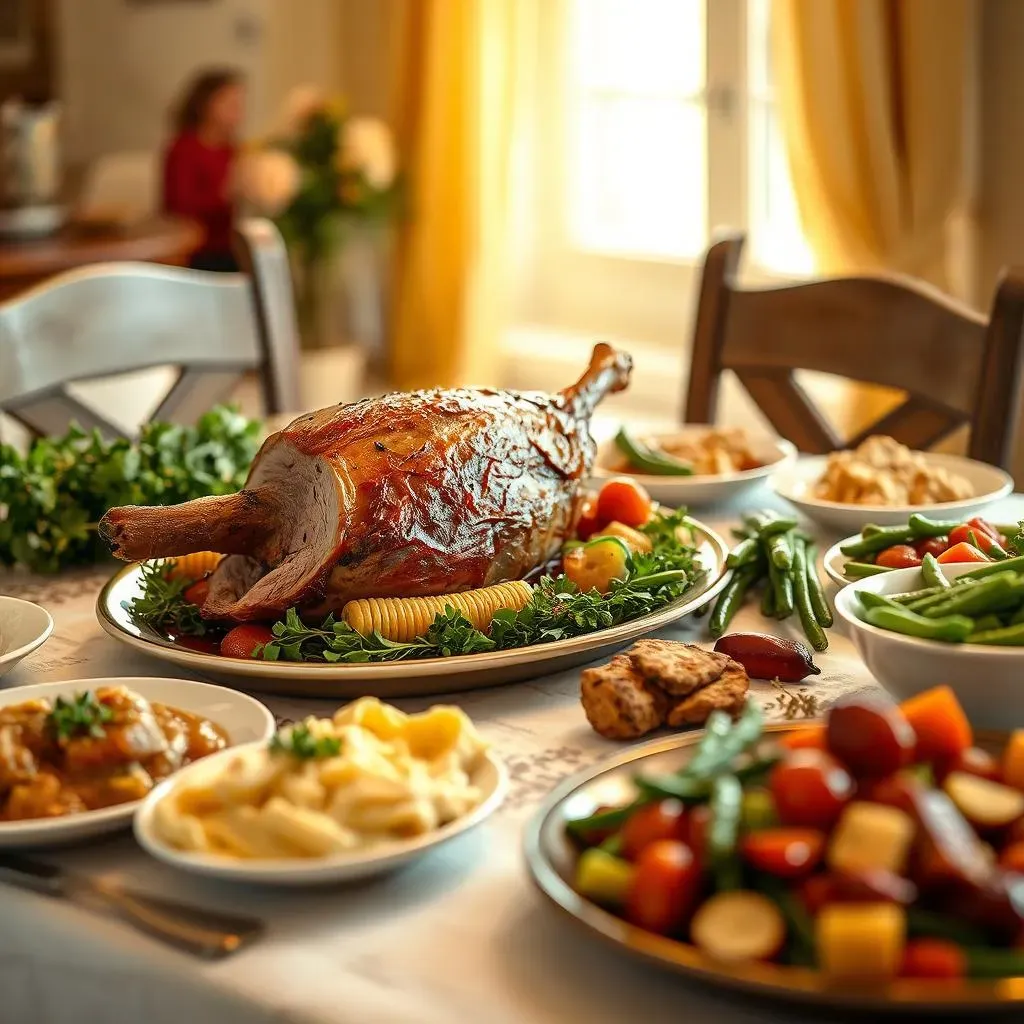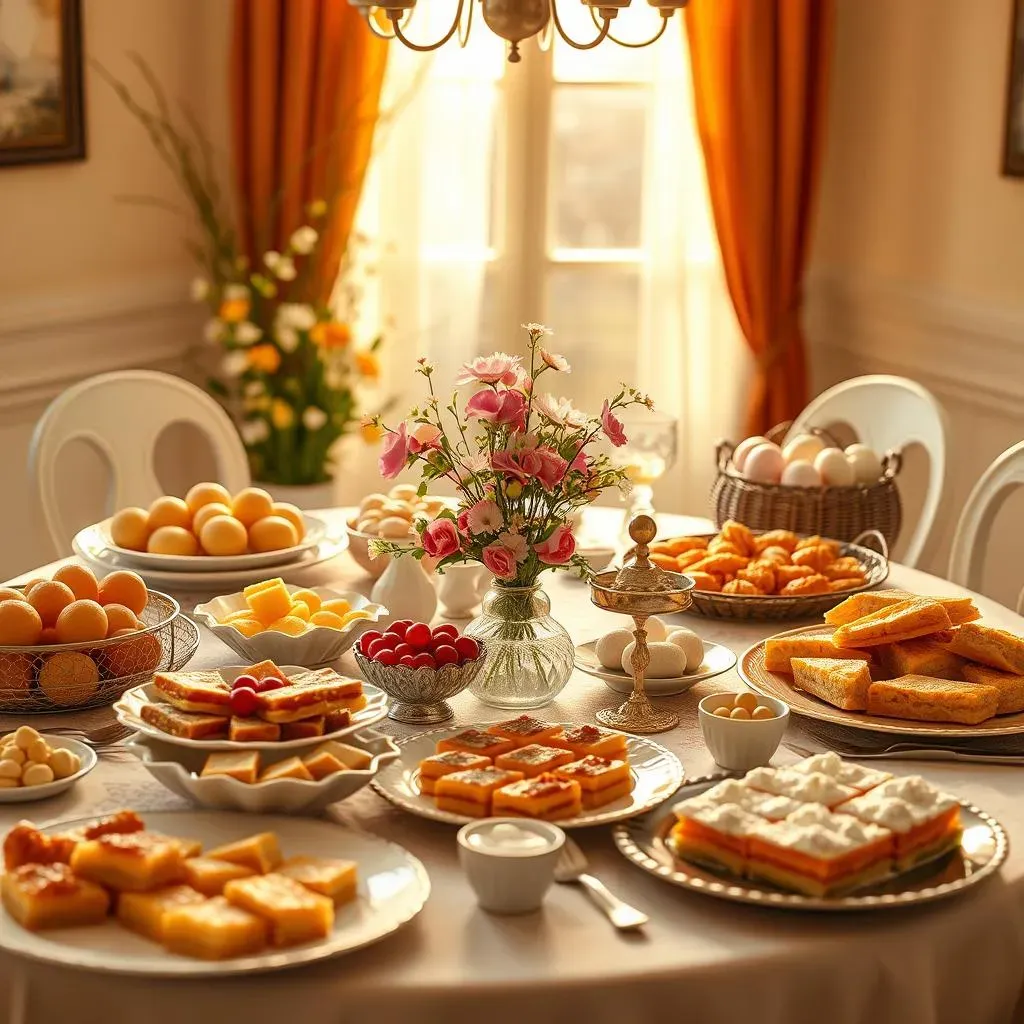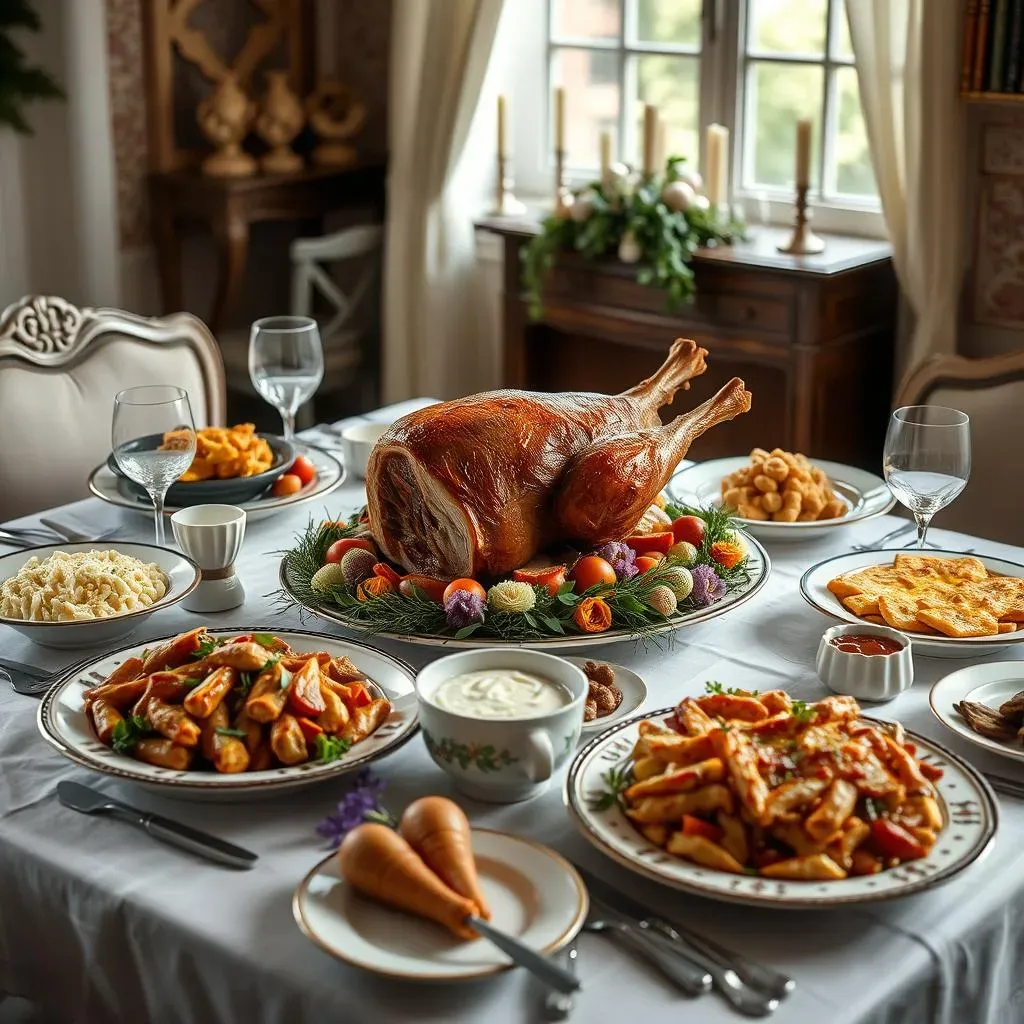Table of Contents
Ever wonder what a real Greek Easter celebration looks like? It's not just about chocolate bunnies, let me tell you! It's a vibrant, delicious, and deeply meaningful holiday, centered around family, faith, and of course, incredible food. I remember as a kid, the smell of baking bread and roasting lamb would fill my yiayia's house, a symphony of aromas that meant Easter was finally here. We'd spend hours in church, the chanting echoing in the air, and then rush home for the feast. This article isn't just a list of recipes, it's a journey into my memories and the heart of Greek Easter. We'll explore traditional dishes, from the savory delight of Pastitsio to the sweet indulgence of Baklava, all while understanding why these greek easter dinner recipes are so special. Get ready to discover the tastes of my childhood and hopefully, create some new traditions of your own with these authentic Greek Easter dinner recipes.
My Greek Easter Memories
My Greek Easter Memories
so "My Greek Easter Memories," where do I even begin? It's like trying to capture sunshine in a jar, you know? For me, it wasn't just one day, it was a whole season of anticipation. I can still picture myself as a kid, all dressed up in my Sunday best, heading to church with my family. The air was always thick with incense, and the chanting felt like it vibrated right through you. It was a long service, I won't lie, but there was this sense of solemnity and excitement all mixed together. And then, after what felt like forever, the priest would finally announce "Christos Anesti," "Christ is Risen," and the whole place would erupt in cheers. That was the signal, the real party was about to start. The church bells would ring, and everyone would practically race home, ready for the feast that was waiting.
It wasn't just the church part though, it was the whole build-up to Easter Sunday. My yiayia would be in the kitchen for days, the whole house smelling like spices and warm bread. She'd be making Tsourekia, that sweet, braided bread with the red eggs nestled in the dough. And let me tell you, those red eggs weren't just for decoration, they had this whole symbolic meaning about the blood of Christ. We'd even have this fun game where we'd tap our eggs together, trying to crack everyone else's before our own broke. It was silly, but it was part of the fun. Looking back, those moments, the sounds, the smells, the feeling of family all together, that's what Greek Easter is all about for me. It's not just a holiday, it's a collection of cherished memories.
Element | Description |
|---|---|
Incense | Aromatic smoke used in church services, creating a solemn atmosphere. |
Chanting | The rhythmic singing and prayers during Greek Orthodox services. |
"Christos Anesti" | The traditional Greek Easter greeting, meaning "Christ is Risen." |
Tsourekia | A sweet, braided bread with red eggs, a staple of Greek Easter. |
Red Eggs | Symbolize the blood of Christ, used in games and as part of the meal. |
Traditional Greek Easter Dinner Recipes
Traditional Greek Easter Dinner Recipes
The Savory Stars of the Feast
so after all that church stuff and the egg-cracking madness, it's finally time for the food! And let me tell you, Greek Easter dinner is not for the faint of heart. We're talking serious, hearty, stick-to-your-ribs kind of food, which is totally understandable after weeks of fasting for Lent. The star of the show, in my family at least, is always the Pastitsio. It’s like a Greek lasagna, but way better. Imagine layers of perfectly cooked pasta, a rich meat sauce, and a creamy béchamel topping, all baked together until it's bubbly and golden brown. Seriously, just thinking about it makes my mouth water. It's the kind of dish that makes everyone go quiet for a few minutes, just completely lost in the deliciousness. It’s a labor of love, but every single bite is worth the effort.
Then there’s the Tiropita, which are these amazing little phyllo triangles filled with feta cheese and herbs. They're like little pockets of cheesy goodness. My yiayia always made a huge batch, and they’d disappear in minutes. They're so light and flaky, and the salty feta just melts in your mouth. We’d have them as appetizers, but honestly, I could probably eat a whole plate of them for dinner. These two dishes, Pastitsio and Tiropita, are just the beginning. The feast is a celebration of flavor and tradition, each dish bringing its own story to the table.
Dish | Description |
|---|---|
Pastitsio | Greek lasagna with pasta, meat sauce, and béchamel. |
Tiropita | Phyllo triangles filled with feta cheese and herbs. |
More Must-Have Dishes
But wait, there's more! No Greek Easter feast is complete without a perfectly roasted leg of lamb. Picture this: tender, juicy lamb, seasoned with herbs and garlic, roasted to perfection. It's the kind of dish that just screams "celebration." My family always did it in the oven since we don't have a rotisserie, but the smell of it cooking is just divine. And the potatoes roasted alongside it, soaked in all those delicious lamb juices? Don't even get me started! Then, to balance out all the richness, we'd have some stewed green beans, cooked with tomatoes and onions. They're simple, but they're so comforting and fresh. And of course, a big Cypriot salad with loads of fresh veggies and feta cheese, because, well, you can never have too much feta, right? These dishes aren't just food; they're a part of my family's history, passed down through generations, each bite connecting us to our roots.
It's funny, when I think of Greek Easter, I don't just think about the taste of the food, but about the whole experience. The family all together, the laughter, the chatter, the feeling of being surrounded by love. All of those things make the food taste even better. It's a feast for all the senses, not just the taste buds. And these traditional recipes, they're the heart of it all. They're what makes Greek Easter, well, Greek Easter. It's a beautiful tradition, and one that I’m so happy to share with you.
Sweet Treats for Your Greek Easter Feast
Sweet Treats for Your Greek Easter Feast
A Symphony of Sweetness
so we’ve conquered the savory side of the Greek Easter feast, but let's be real, no celebration is complete without some serious sweets, right? And when it comes to Greek desserts, we're not talking about just any old treats. We're diving into a world of rich flavors, delicate textures, and recipes that have been passed down for generations. First up, we have the Malomakarona. These little oval-shaped cookies are soaked in a honey syrup and sprinkled with chopped walnuts. They’re not overly sweet, but they have this amazing spice that just warms you up from the inside out. My yiayia always made them, and the smell of honey and cinnamon wafting through the house was just pure magic. They’re the kind of treat that you can’t just have one of—trust me on this.
Then, there’s the Kourambiethes, which are these delicate, buttery shortbread cookies, dusted with powdered sugar until they look like little snowballs. They literally melt in your mouth, and they’re so light and airy. It's like eating a cloud made of sugar and butter. My cousins and I used to compete to see who could eat the most without getting powdered sugar all over our faces. It was a losing battle, but a delicious one! These two cookies, Malomakarona and Kourambiethes, are the perfect balance of flavors and textures, and they’re a must-have for any Greek Easter celebration.
Sweet Treat | Description |
|---|---|
Malomakarona | Honey-soaked spiced cookies with walnuts. |
Kourambiethes | Buttery shortbread cookies covered in powdered sugar. |
The Star of the Show: Baklava
And of course, no discussion about Greek desserts would be complete without mentioning the queen of them all: Baklava. It's this layered pastry made with flaky phyllo dough, chopped nuts, and drenched in a sweet honey syrup. It’s rich, it’s decadent, and it’s absolutely irresistible. Each bite is a symphony of textures and flavors, the crispy phyllo, the crunchy nuts, and the gooey honey syrup. It’s the kind of dessert that you savor slowly, letting every single flavor dance on your tongue. Honestly, I don’t think I’ve ever met anyone who doesn’t love Baklava. It’s just that good. My family always made a huge tray of it for Easter, and it would disappear almost as soon as it hit the table. It’s a labor of love to make, but every single bite is worth the effort.
I remember one year, I tried to help my yiayia make the baklava, and let's just say, it was a bit of a disaster. I got honey everywhere, and the phyllo dough was sticking to everything. But it was fun, and it's a memory I’ll always cherish. It made me appreciate even more how much love and effort goes into making these traditional desserts. They're not just food; they’re a connection to my family, my culture, and my heritage.
More Sweet Delights
Besides these heavy hitters, there are other sweet treats that often make an appearance during Greek Easter. Things like Kataifi, another shredded phyllo dough dessert similar to baklava but with a different texture, and Galaktoboureko, a creamy custard pie wrapped in phyllo dough. Each one has its own unique flavor and texture and adds to the beautiful variety of sweet options during the feast. It’s like a sweet parade of deliciousness, each dessert trying to outdo the other. The best part is, these desserts aren’t just for Easter. You can make them any time you want a taste of Greek tradition. And the aroma of these sweet treats baking in the oven? It’s a scent that will forever remind me of Easter with my family.
So, there you have it, a sweet journey through some of the most beloved desserts of the Greek Easter feast. These aren't just recipes; they're a part of my story, and I hope they become a part of yours too. So, go ahead, try these recipes, make a mess in your kitchen, and most importantly, share them with the people you love. That's what Greek Easter is all about, after all.
A Taste of Tradition: Wrapping Up Our Greek Easter Feast
So, there you have it – a glimpse into my Greek Easter, filled with family, faith, and fantastic food. From the savory layers of Pastitsio to the sweet, sticky goodness of Baklava, these recipes aren't just meals; they're a taste of tradition, passed down through generations. I hope this article has inspired you to try some of these greek easter dinner recipes and maybe even start your own family traditions. Whether you're Greek or just curious, the warmth and joy of a Greek Easter feast are something everyone can enjoy. Happy cooking, and Kali Anastasi! (Happy Resurrection!)
